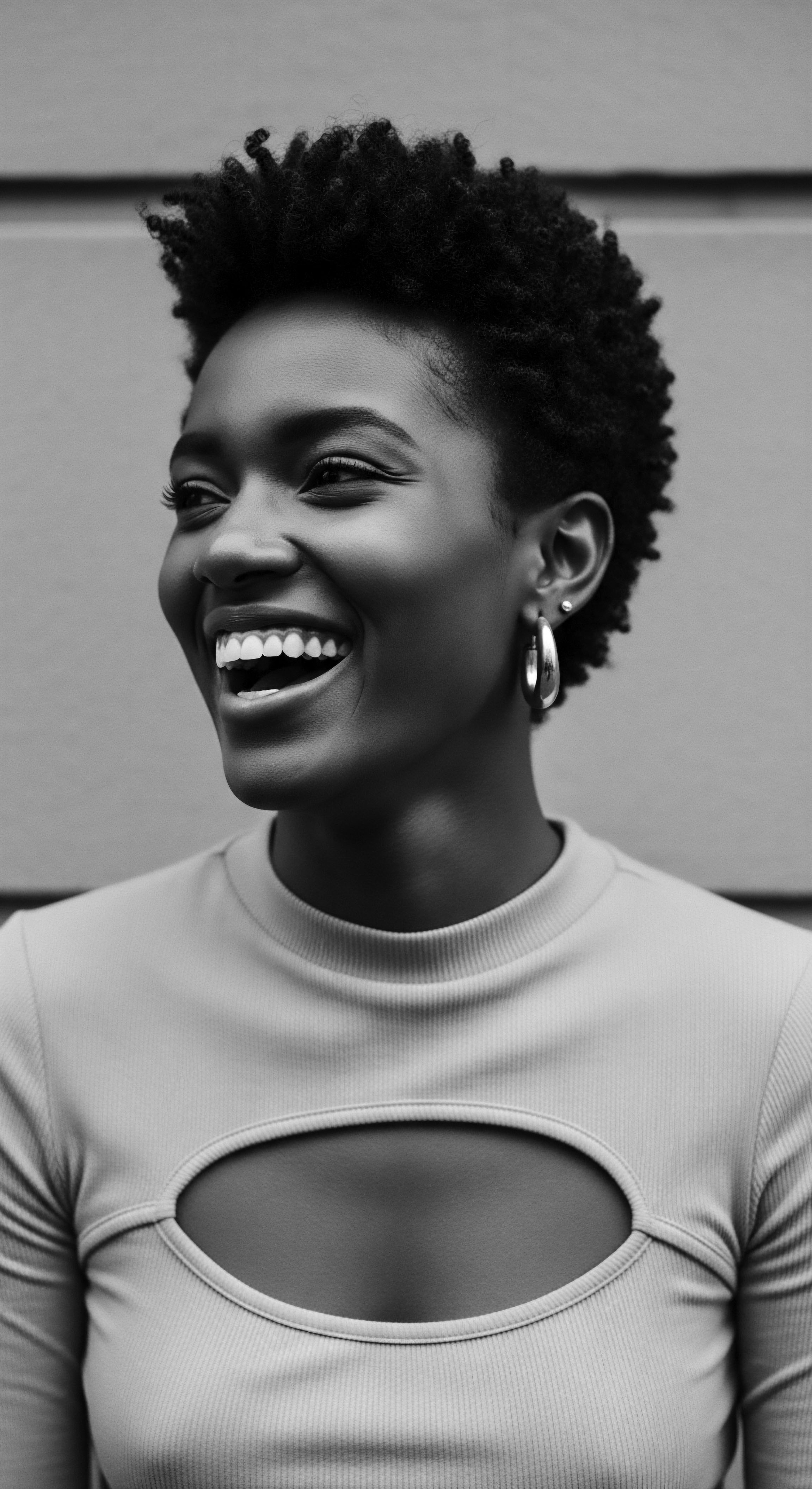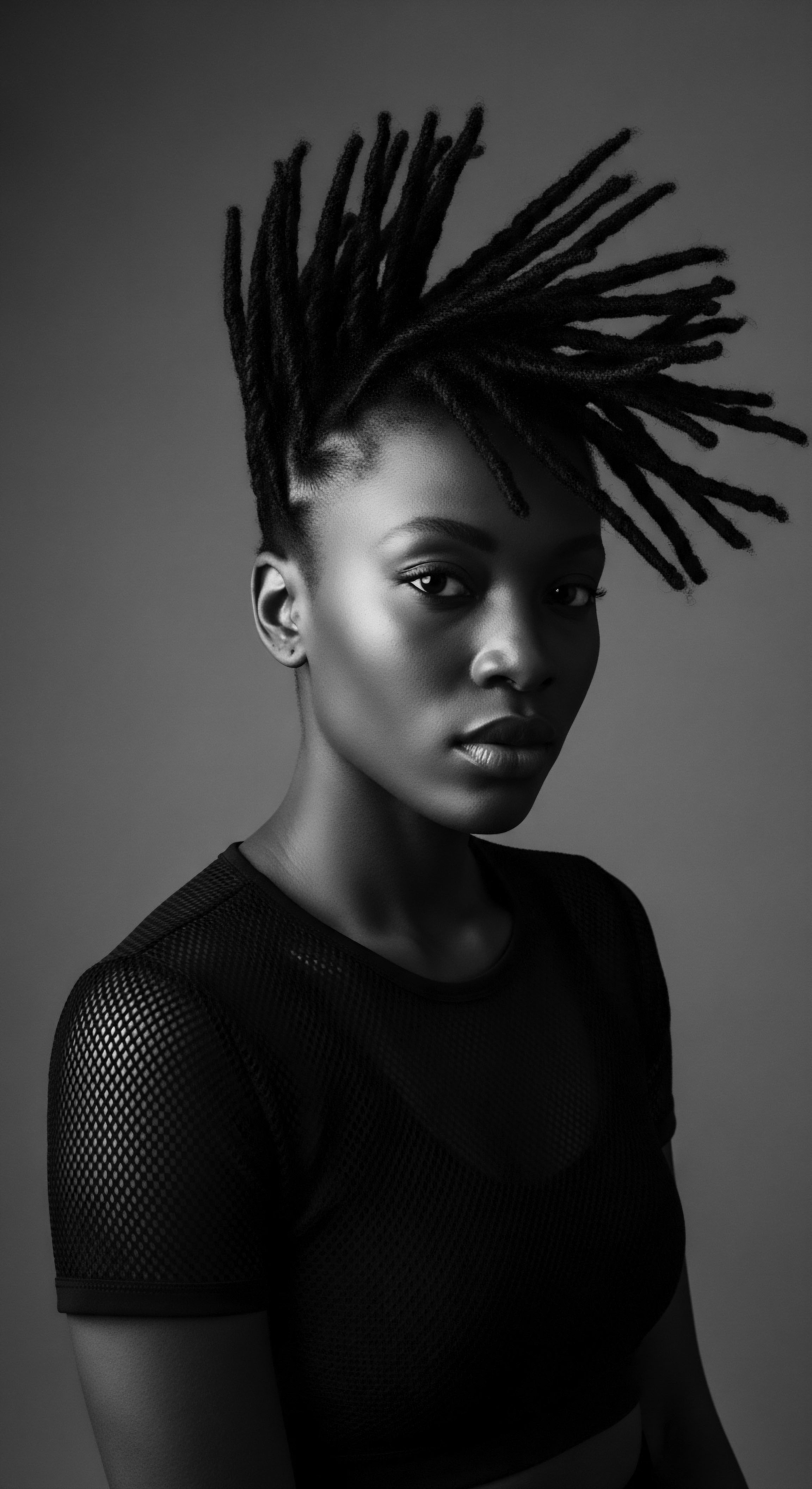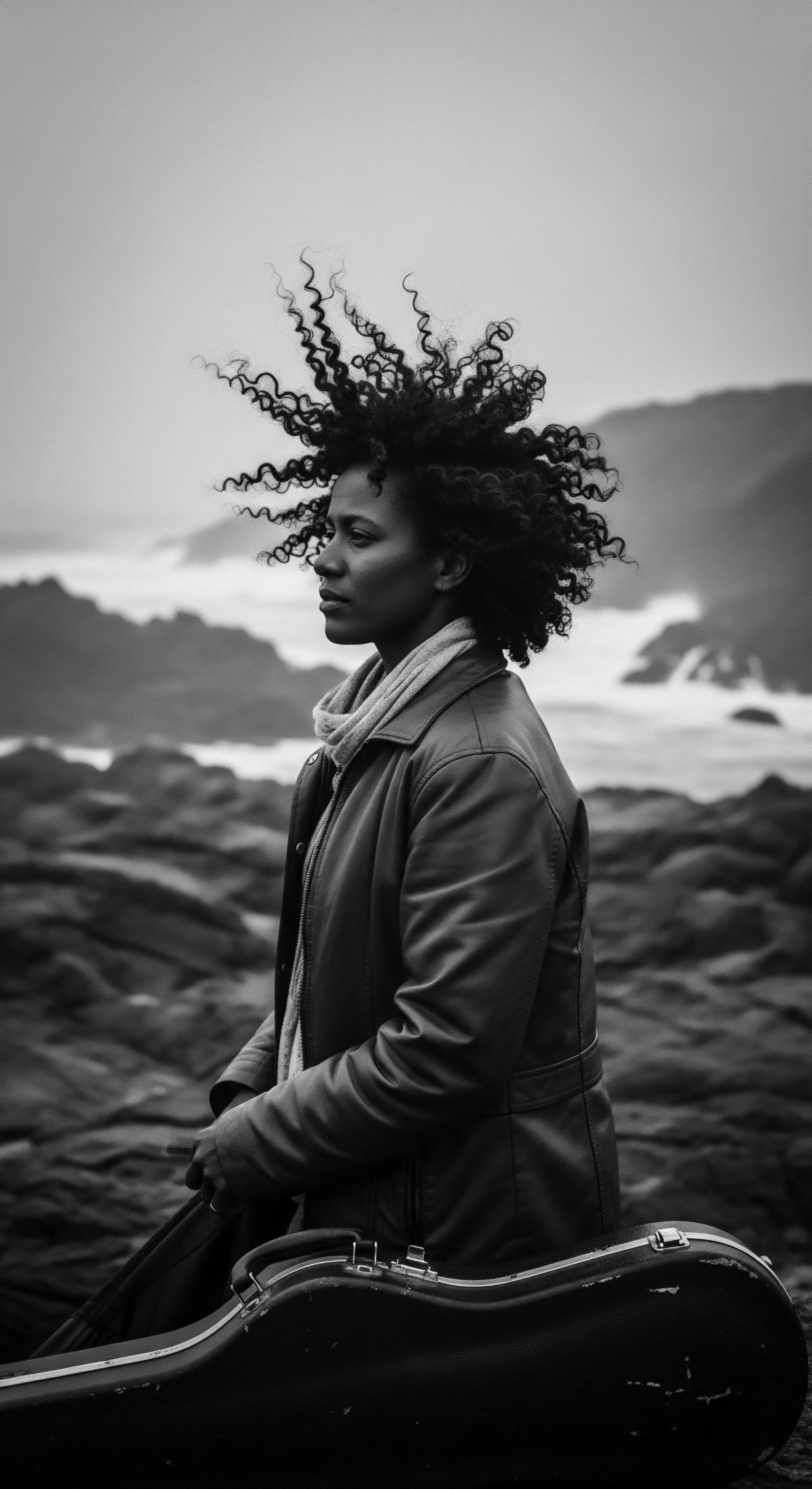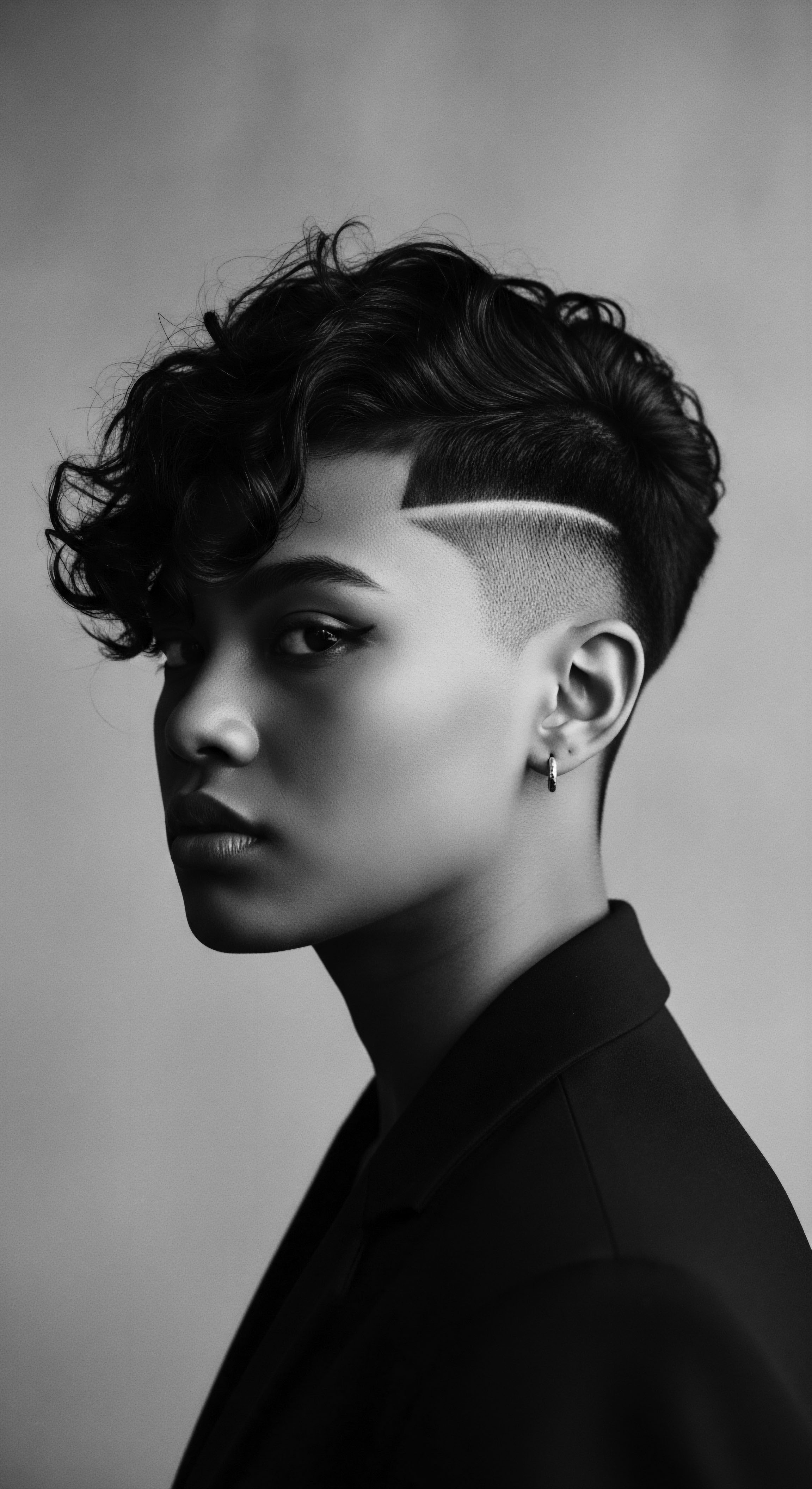
Roots
Consider, for a moment, the intimate dance of fingers moving through strands, a rhythmic conversation older than recorded time. This familiar gesture, especially for those with textured hair, stretches back through generations, a continuous, living memory held within each coil and kink. For our ancestors, particularly during epochs of profound oppression, these actions of hair care were far from mere aesthetics.
They were acts of defiance, sustenance, and preservation, woven into the very fabric of survival. This is a story etched not only on the scalp but in the very soul, a heritage whispered from one era to the next, a deep connection to shared pasts.
To grasp how deeply ancestral hair rituals sustained communities through historical periods of oppression, we must first appreciate the inherent nature of textured hair itself. The intricate structure of coils and curls, once pathologized by oppressive systems, served as a biological advantage, an adaptation to intense sunlight, providing scalp protection and air circulation. Its very form, resistant to easy manipulation, implicitly resisted dominant beauty ideals and offered a canvas for expressions of identity that could not be easily erased.

What is the Elemental Composition of Textured Hair?
Textured hair, with its unique helical structure, derives its core strength and distinctiveness from keratin, the same protein that forms our skin and nails. However, the distribution of disulfide bonds within the keratin proteins of coiled hair creates its characteristic spring and elasticity. This internal architecture, coupled with the hair follicle’s elliptical shape, dictates the tight curl patterns seen in many Black and mixed-race hair types. From an ancestral perspective, this inherent resilience meant that hair could withstand environmental elements and still maintain its integrity, a practical benefit in times when resources for elaborate care were limited.
Beyond keratin, melanin also plays a pivotal role in the appearance and intrinsic properties of textured hair. The presence of eumelanin, which provides darker pigmentation, contributes to its natural UV protection. This elemental composition, studied through the lens of modern science, validates the inherent wisdom of ancestral practices that sought to preserve and enhance these natural qualities.

How Did Ancestral Classifications Inform Understanding of Hair?
Before the imposition of external, often demeaning, classification systems, African societies held diverse and intricate understandings of hair. Hairstyles and textures conveyed a wealth of information ❉ age, marital status, social rank, ethnic identity, spiritual beliefs, and even wealth. For example, the Yoruba people of Nigeria crafted elaborate hairstyles that symbolized community roles, and the Himba tribe in Namibia adorned their hair with ochre paste, linking themselves to the earth and their ancestors.
This deep, contextual understanding meant that hair was not a standalone physical attribute; it was a living lexicon, a visual language spoken among kin. The practice of communal grooming, often taking hours or days, served as a social opportunity, strengthening familial bonds and transmitting cultural features through generations.
The coils and contours of textured hair hold ancestral memory, a silent chronicle of resilience and belonging.
The lexicon of textured hair, even in its pre-colonial forms, moved far beyond mere description; it was infused with meaning. Terms and practices varied widely across ethnic groups. These traditional understandings of hair’s purpose and presentation stand in stark contrast to the dehumanizing language and practices imposed during periods of oppression, which often sought to redefine Black hair as “unruly” or “dreadful.” Understanding the foundational science of textured hair today allows us to appreciate the ancient ingenuity that harnessed its properties for survival and cultural preservation.

Ritual
The continuation of ancestral hair rituals during periods of profound suppression was a powerful act of defiance, a quiet revolution happening on the scalp. These practices were not simply about appearance; they were about maintaining identity, communicating in veiled ways, and physically aiding survival. The hands that meticulously braided, twisted, or adorned hair were also shaping pathways to freedom, preserving heritage against systemic attempts to erase it.
In the chilling wake of the transatlantic slave trade, one of the first dehumanizing acts was the forcible shaving of African captives’ heads. This brutal act severed visible ties to tribal identity, social standing, and spiritual connection. Yet, even in such dire circumstances, the ingenuity of those who endured found expression. Hair became a clandestine tool, a medium for covert communication and physical aid in the struggle for liberty.

What Role Did Protective Styles Play in Covert Communication?
Protective styles, such as cornrows, gained a renewed, desperate significance during slavery. These styles, ancient in their origins, were transformed into a silent language. In regions like Colombia, enslaved women used intricate cornrow patterns to create maps and convey directions for escape routes.
A particular number of braids might signal a meeting time, while curved patterns indicated escape paths. This profound innovation allowed for information transfer without drawing the scrutiny of slaveholders.
Beyond cartography, these styles also served as literal lifelines. Research indicates that enslaved people braided rice seeds, gold fragments, or other small items into their hair. These hidden provisions offered sustenance or a means of trade once freedom was reached. This practice speaks volumes about the incredible foresight and resourcefulness of those who resisted bondage, recognizing that even the most intimate personal care could be a strategic act.
Hair, in its enduring coiled resilience, became a canvas for clandestine codes and survival provisions.
The history of cornrows, often called “canerows” in the Caribbean, connects directly to the labor conditions of sugar cane fields, yet their origins trace back thousands of years in Africa, depicted in Stone Age paintings. Their ability to keep hair tidy and protected made them a practical choice for those forced into arduous labor, even as they held deeper, hidden meanings. This dual function of practicality and profound cultural significance speaks to the adaptability of ancestral rituals under duress.

How Did Traditional Tools Adapt to Oppression?
With access to traditional hair care tools often denied, enslaved individuals created new implements from whatever materials they could find. Combs and picks, often made from wood, bone, or even metal scraps, became essential for maintaining hair health and executing these vital styles. Natural oils, like shea butter or coconut oil, and animal fats were utilized to moisturize and protect hair from the harsh conditions of plantation life. Headwraps, while sometimes mandated by oppressive laws like the Tignon Law of 1786 in Louisiana to denote inferior status, were also defiantly repurposed.
Black women transformed them into symbols of beauty and resistance, using vibrant, expensive fabrics and adorning them with feathers and jewels. This ability to transform instruments of oppression into tools of self-expression embodies the unbreakable spirit of textured hair heritage.
- Cornrows ❉ Intricate braids serving as maps for escape routes and hiding places for seeds.
- Headwraps ❉ Repurposed from symbols of subservience into statements of beauty and cultural pride.
- Natural Oils ❉ Utilized from available resources to maintain hair health amidst brutal conditions.

Relay
The echoes of ancestral hair rituals reverberate through time, reaching us as a powerful testament to survival, identity, and profound cultural endurance. The mechanisms by which these practices aided survival were not singular; they were multi-layered, spanning physical well-being, psychological fortitude, and the preservation of communal bonds. This enduring heritage, passed down through generations, became a vital conduit for resilience in the face of relentless assault on identity and humanity.
During the transatlantic slave trade, when millions of Africans were forcibly removed from their homelands, there was a systematic attempt to strip them of their cultural identity, often beginning with the shaving of their heads. Yet, even under such severe conditions, hair care practices persisted, adapted, and became deeply coded expressions of resistance. This historical reality underscores how deeply rooted hair is within Black and mixed-race heritage, far beyond superficial appearance.

How Did Hair Rituals Nurture Psychological Well-Being?
Hair rituals, particularly communal grooming sessions, acted as significant anchors for psychological survival. In pre-colonial Africa, hair styling was a highly valued social activity, an intimate space where bonds were strengthened, and oral traditions, genealogies, and cultural knowledge were transmitted. This tradition, remarkably, continued even under enslavement. Communal hair care on Sundays, the only day of rest for many, became a vital ritual.
These gatherings, often conducted in secret, allowed enslaved people to recreate a sense of family and cultural continuity, reinforcing social bonds essential for morale and collective resilience. The very act of caring for one another’s hair, a gentle touch in a world of brutality, affirmed humanity and dignity.
Moreover, hair became a visual language of identity when spoken languages were suppressed. Hairstyles could convey marital status, age, wealth, and even ethnic affiliation among African diaspora communities. This silent communication maintained a sense of self and belonging amidst a deliberate effort to erase individuality.
The “Black is Beautiful” movement of the 1960s, with its embrace of the Afro, powerfully re-asserted this connection to heritage and self-acceptance, a direct rejection of Eurocentric beauty standards imposed for centuries. The Afro became a political statement, a symbol of defiance and pride during the Civil Rights Movement, illustrating a continuity of hair as a form of cultural resistance.
Beyond styling, hair care became an intimate act of collective memory, a shared space where cultural truths were preserved.

What Insights do Ancestral Practices Offer for Modern Hair Health?
Ancestral wisdom regarding hair care was deeply intertwined with environmental knowledge and a holistic view of well-being. The reliance on natural ingredients and gentle handling methods, born of necessity and deep observation, aligns remarkably with modern scientific understanding of textured hair health.
Consider the use of plant-based oils and butters, common in African traditions, which offer emollients and occlusives that shield the hair from dryness—a common challenge for textured hair due to its unique structure which can lose moisture quickly. The historical practice of regularly oiling and sealing hair, along with protective styles, worked to minimize manipulation and exposure to environmental stressors, thereby reducing breakage and retaining length. Modern science validates these principles; protective styles genuinely aid in hair health by minimizing breakage and allowing growth.
| Ancestral Practice Communal Braiding Sessions |
| Historical Significance for Survival Provided spaces for cultural retention, communication, and psychological support during enslavement. |
| Contemporary Relevance for Textured Hair Heritage Continues to foster community, shared knowledge, and intergenerational bonding around hair care. |
| Ancestral Practice Embedding Seeds/Maps in Hair |
| Historical Significance for Survival Served as a literal tool for escape and physical sustenance, demonstrating extreme resourcefulness. |
| Contemporary Relevance for Textured Hair Heritage Symbolizes ingenuity and defiance, reminding us of hair's capacity for agency and concealed strength. |
| Ancestral Practice Utilizing Natural Butters and Oils |
| Historical Significance for Survival Protected hair from harsh conditions and provided essential moisture when commercial products were non-existent. |
| Contemporary Relevance for Textured Hair Heritage Reinforces the value of natural ingredients for maintaining moisture balance and scalp health in textured hair. |
| Ancestral Practice Headwrap Adaptations |
| Historical Significance for Survival Transformed a tool of oppression into an expression of beauty, status, and resistance. |
| Contemporary Relevance for Textured Hair Heritage Celebrates versatility and cultural pride, shielding hair while making a statement about heritage. |
| Ancestral Practice These ancestral actions underscore how heritage practices are not relics of the past but living guides for present-day care and identity. |
The preservation of these hair rituals, even under the constant threat of erasure, stands as a testament to the power of cultural memory. The narrative of enslaved women braiding rice seeds into their hair for survival during the Middle Passage or for planting upon escape is a powerful, albeit harrowing, illustration. This specific historical example, documented across narratives of the African diaspora, highlights hair’s dual role as a means of physical preservation and a carrier of agricultural heritage, demonstrating how intimately ancestral hair rituals aided survival during periods of oppression. (Okpalaojiego, 2024; Ajao, 2022) The practice of concealing valuable items within intricate braided styles, particularly documented in Colombia for map creation and hiding seeds by Benkos Biohó’s network, illustrates a deliberate, conscious strategy.
This covert communication, woven into the very structure of the hair, directly facilitated escape and community building, showing that these rituals were not merely symbolic. They were practical, life-saving measures rooted deeply in communal knowledge and a shared heritage of resistance.
- Plant-Based Oils ❉ Shea butter and coconut oil, traditionally used for moisturizing, help seal the hair cuticle and reduce moisture loss.
- Low-Manipulation Styles ❉ Braids and twists, common protective styles, minimize breakage by reducing daily combing and styling stress.
- Head Coverings ❉ Historically worn for protection from elements, they now shield hair during sleep, preserving moisture and preventing tangles.

Reflection
The story of textured hair, particularly during periods of oppression, stretches far beyond strands and styles. It is a profound chronicle of human spirit, an unwavering refusal to be broken. Our hair, in its myriad forms, has always been a repository of memory, a living archive of heritage, and a resilient force against erasure. It is a testament to the ingenious ways communities adapted, resisted, and survived.
The ancestral rituals—the hands that braided secrets, the communal care that solidified kinship, the defiant adornments that proclaimed identity—remain deeply embedded within the ‘Soul of a Strand’. They are not just historical footnotes; they are living lessons, guiding our understanding of self-care, community, and the profound power of cultural continuity. The enduring significance of these practices reminds us that while oppression may seek to diminish, the heritage held in our hair perpetually shines, offering both wisdom and inspiration for journeys yet to unfold.

References
- Afriklens. (2024). African Hairstyles ❉ Cultural Significance and Legacy.
- BLAM UK CIC. (2022). The history of Black Hair.
- Cultural Survival. (2020). Honoring the Spiritual Legacy, Resiliency, & Healing Power of Our Ancestors Through Indigenous Customary Hair Traditions.
- Library of Congress. (n.d.). Heavy is the Head ❉ Evolution of African Hair in America from the 17th c. to the 20th c.
- BBC News. (2015). How does black hair reflect black history?
- Beds SU. (2022). Black History Month 2022 ❉ The History Behind Cornrows.
- University of Salford Students’ Union. (2024). The Remarkable History Behind Black Hairstyles.
- ResearchGate. (2023). Cornrow ❉ A Medium for Communicating Escape Strategies during the Transatlantic Slave Trade Era ❉ Evidences from Elmina Castle and Centre for National Culture in Kumasi.
- Essence Magazine. (2022). This African Braiding Technique Was Created By Our Ancestors To Help Prevent Hunger During Slavery.
- Ancient Origins. (2022). African Slaves Used Braids to Communicate Escape Routes in Colombia.
- Noma Sana. (2024). The History of Straightening Afro Hair ❉ Culture, Trends & Identity.
- Sartorial Magazine. (2025). Braids, Locs, and Beyond ❉ The Beauty and History of Protective Styles.
- Creative Support. (2023). The History of Black Hair.
- Luster Products. (2022). Movement Among Black Women To Wear Their Hair Natural.
- Fulham Palace. (n.d.). Hair.
- xoNecole. (2024). The Complex Relationship Between Black Women, Our Hair, And the Protective Styles We Love.
- EBSCO Research Starters. (n.d.). Afro-textured hair.
- Know Your Hairitage. (n.d.). African Culture.
- Nuevo Noir. (2024). The history of Afro hair.
- Smashboard. (2022). Protest Hair and Its Power as a Political Tool.
- Cécred. (2025). The Role of Hair in Shaping Identity.
- Kilburn & Strode. (2021). Afro-texture ❉ a hair-story.
- Essence. (2020). The Impact of The ‘Fro In The Civil Rights Movement.
- Amaka Studio. (2023). The History and Culture of African Natural Hair ❉ From Ancient Times to Modern Trends.
- BarberSets. (2023). Cornrows ❉ History, Culture, and Contemporary Styles.
- Fix Salon. (2024). Celebrating Diversity ❉ Cultural Influences on Hair.
- Halo Collective. (n.d.). End Hair Discrimination.
- Cultural Survival. (2020). Honoring the Spiritual Legacy, Resiliency, & Healing Power of Our Ancestors Through Indigenous Customary Hair Traditions.
- Byrd, A.D. & Tharps, L.L. (2001). Hair Story ❉ Untangling the Roots of Black Hair in America. St. Martin’s Press.
